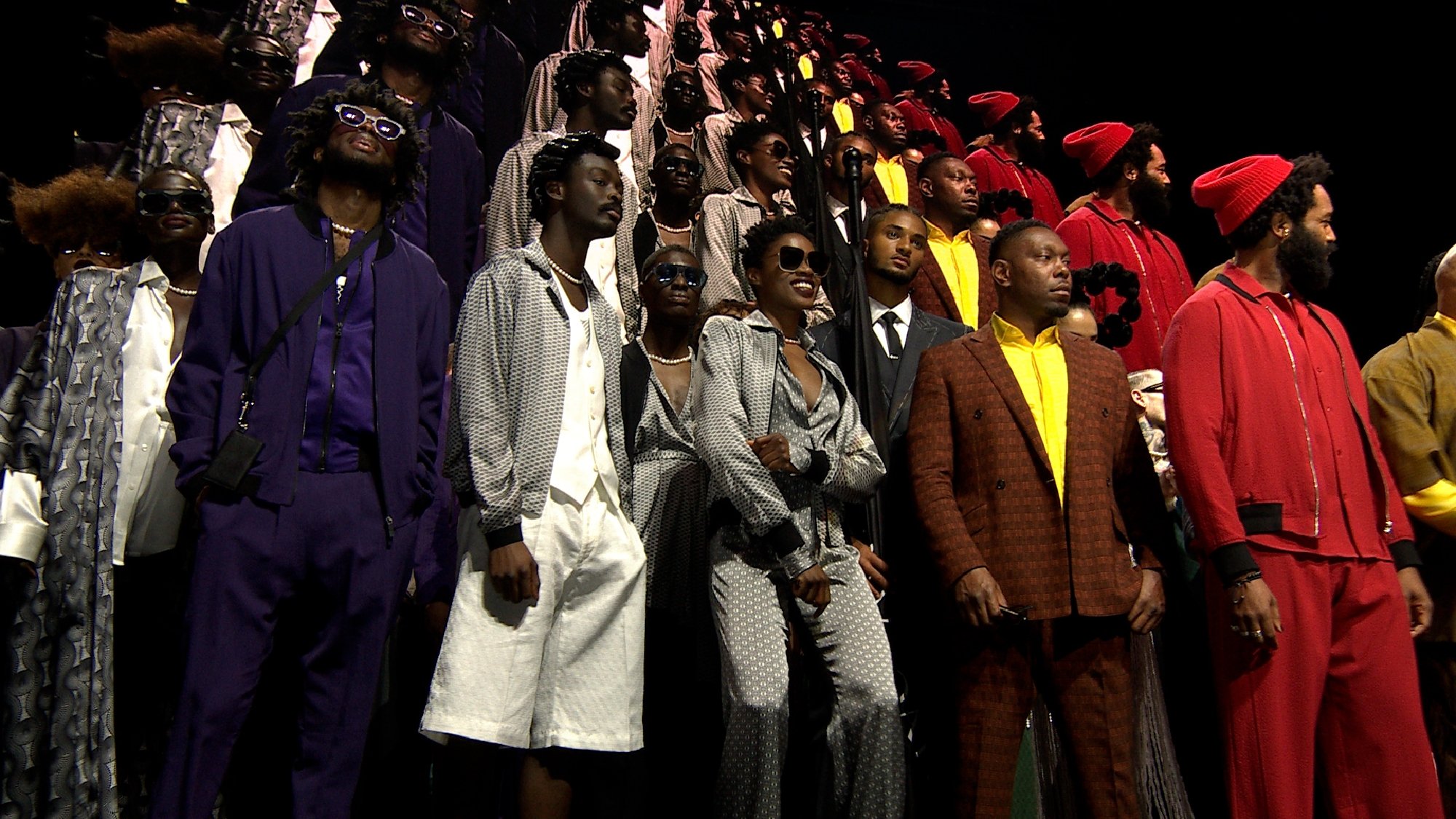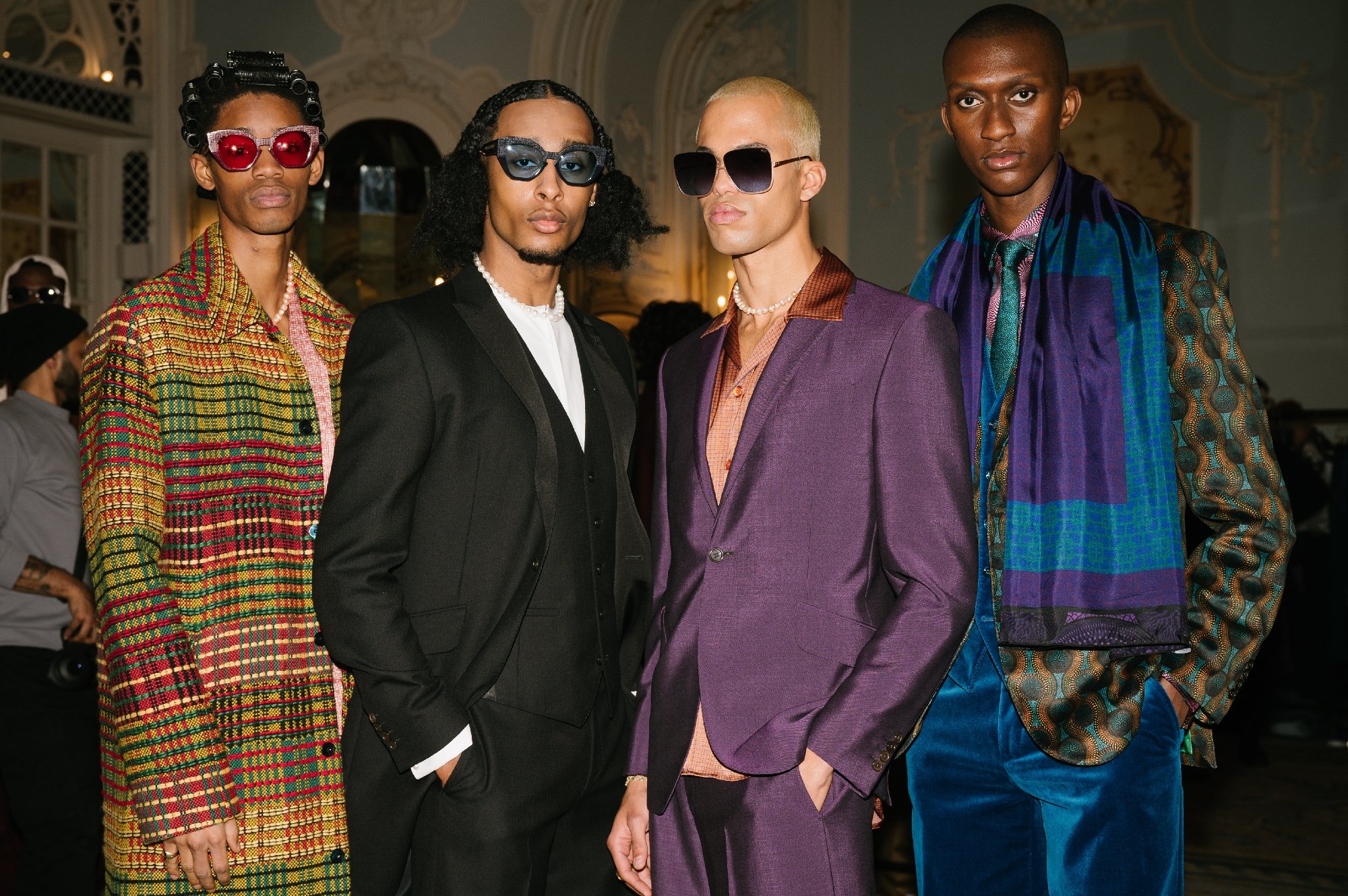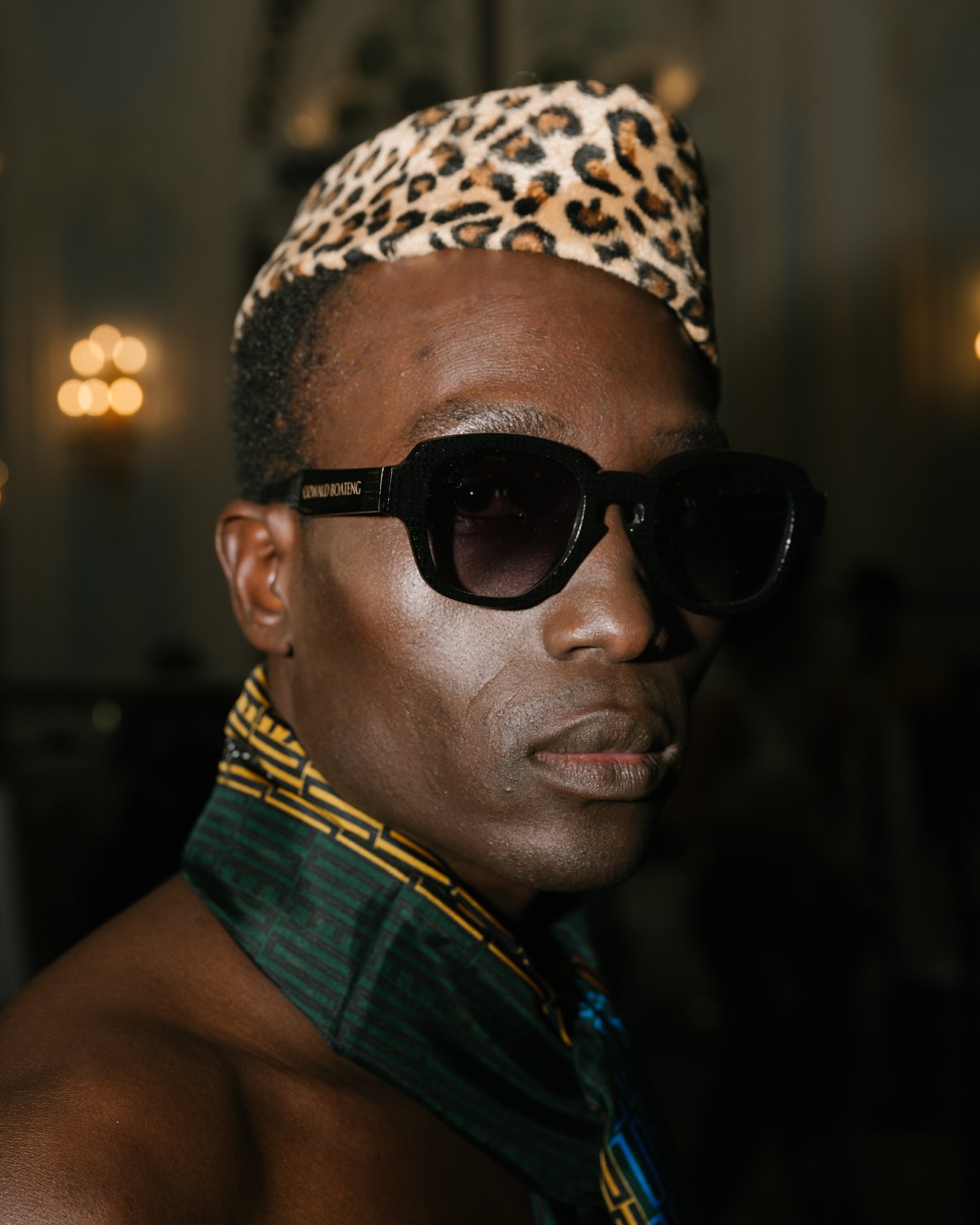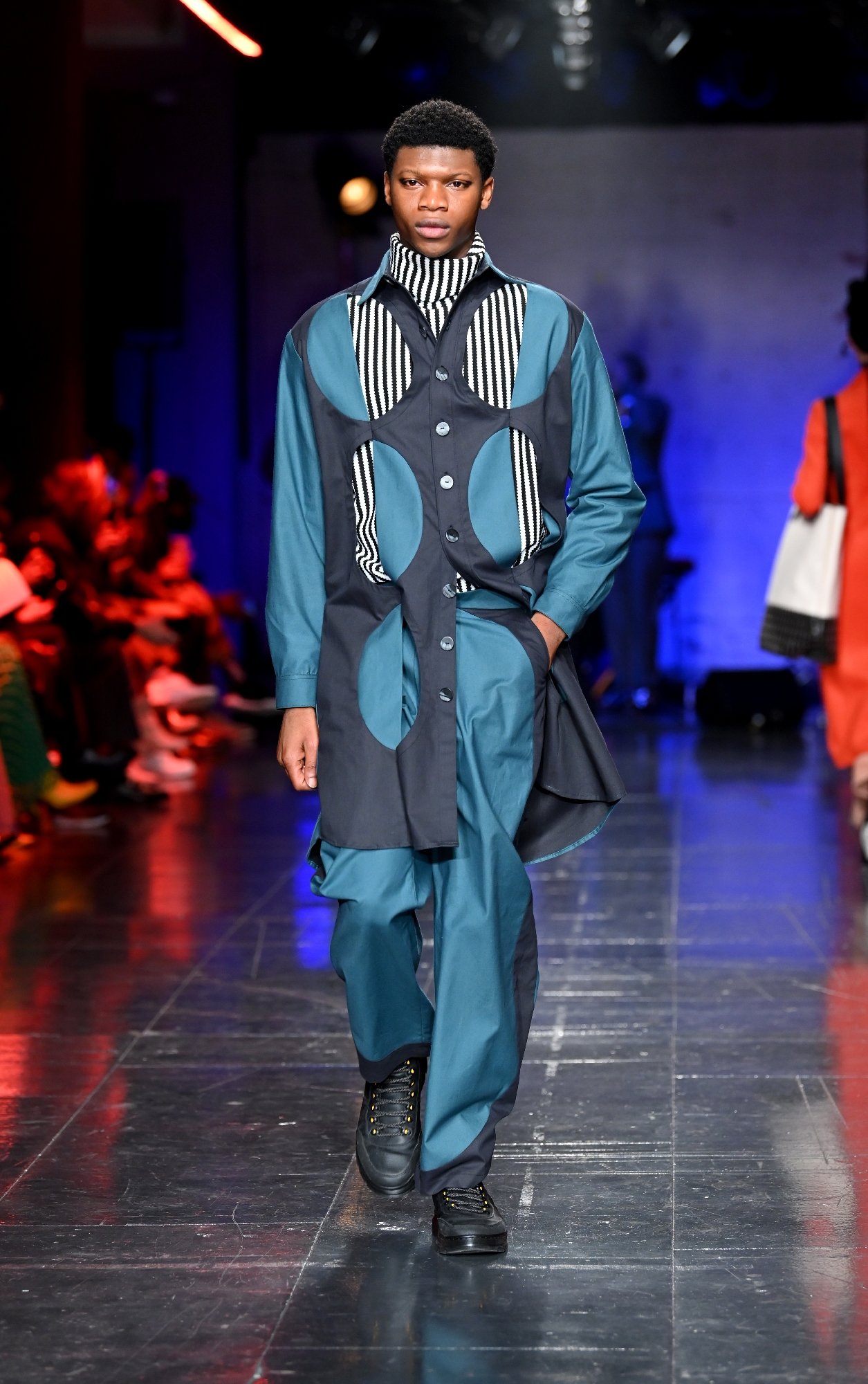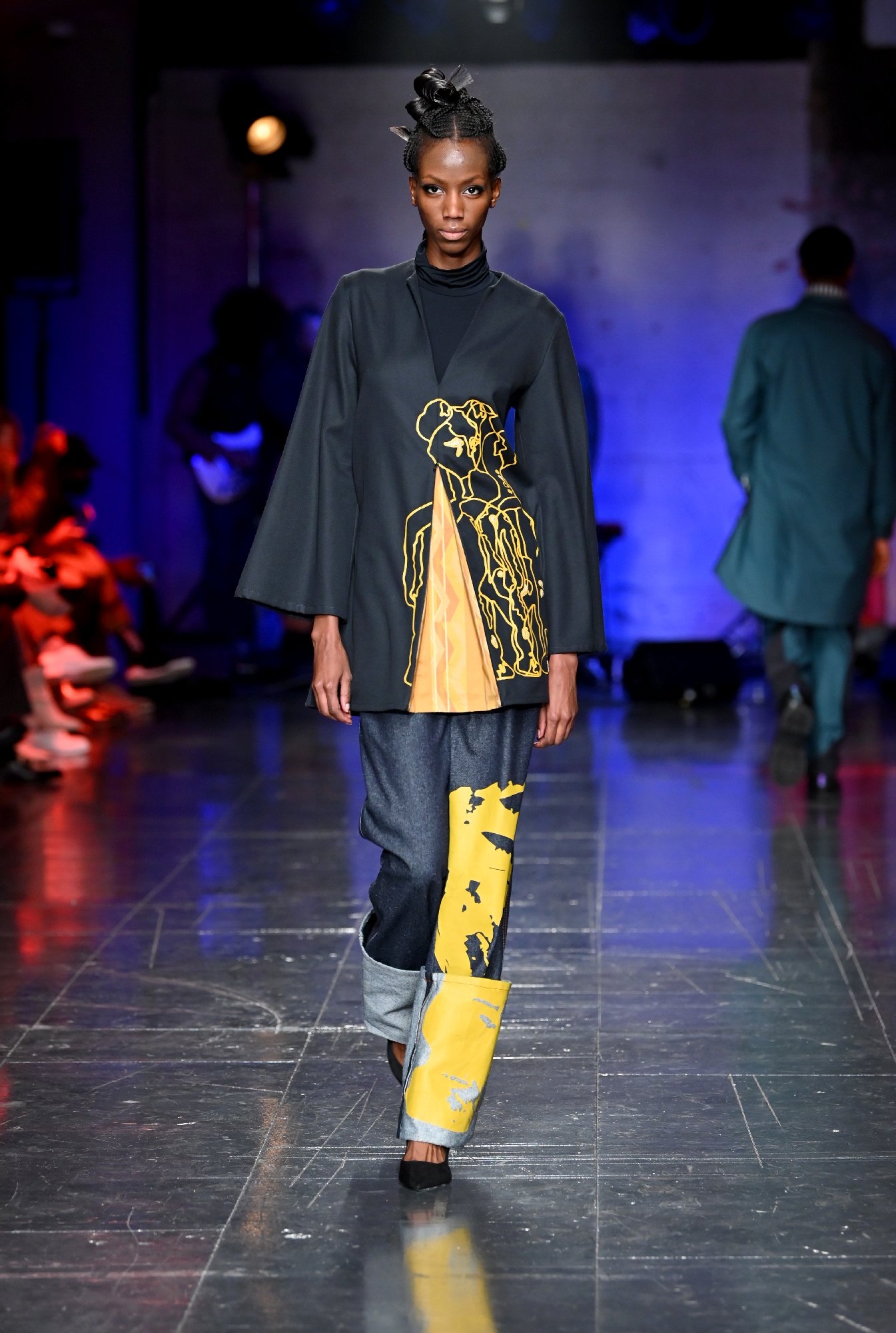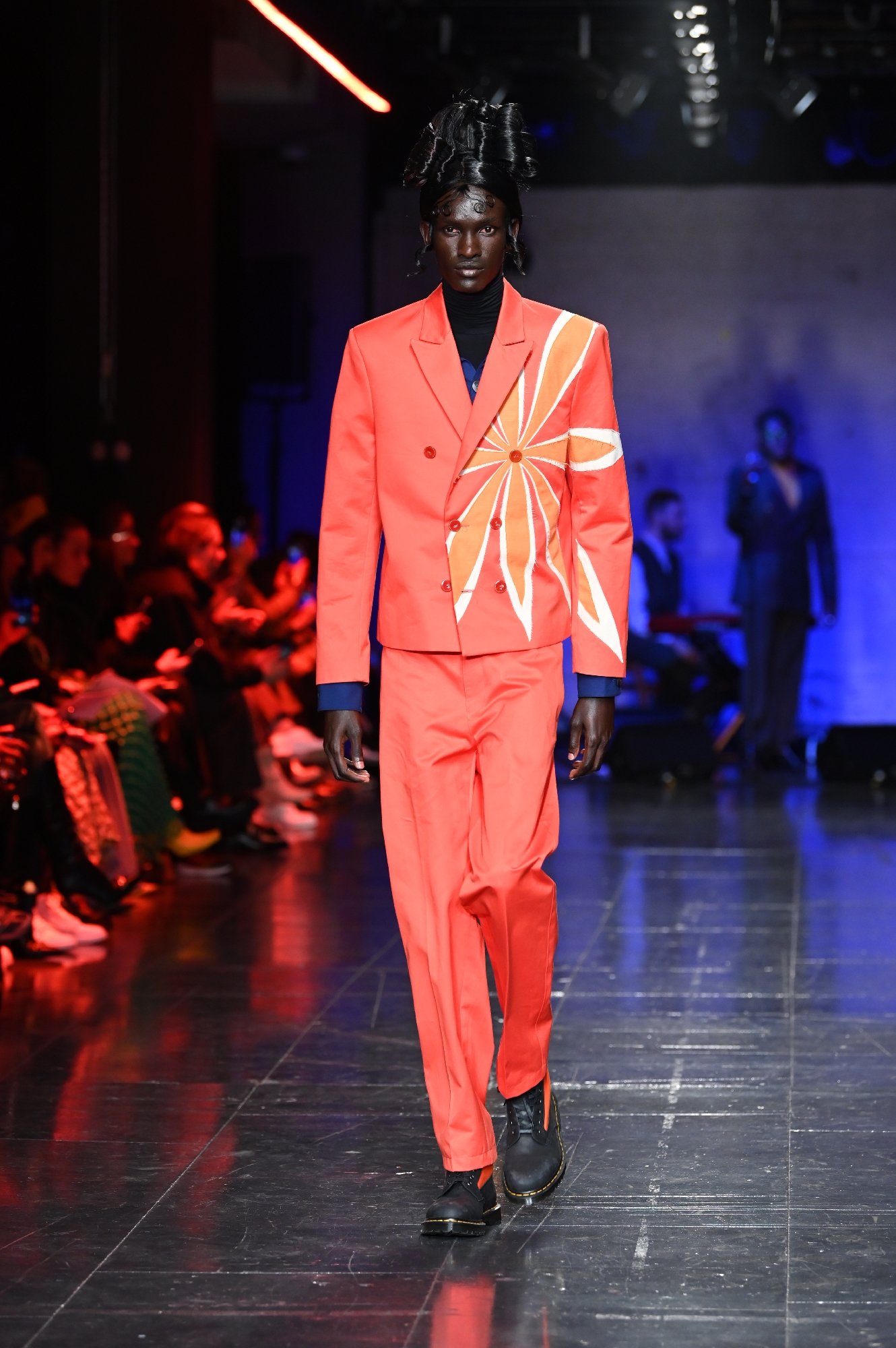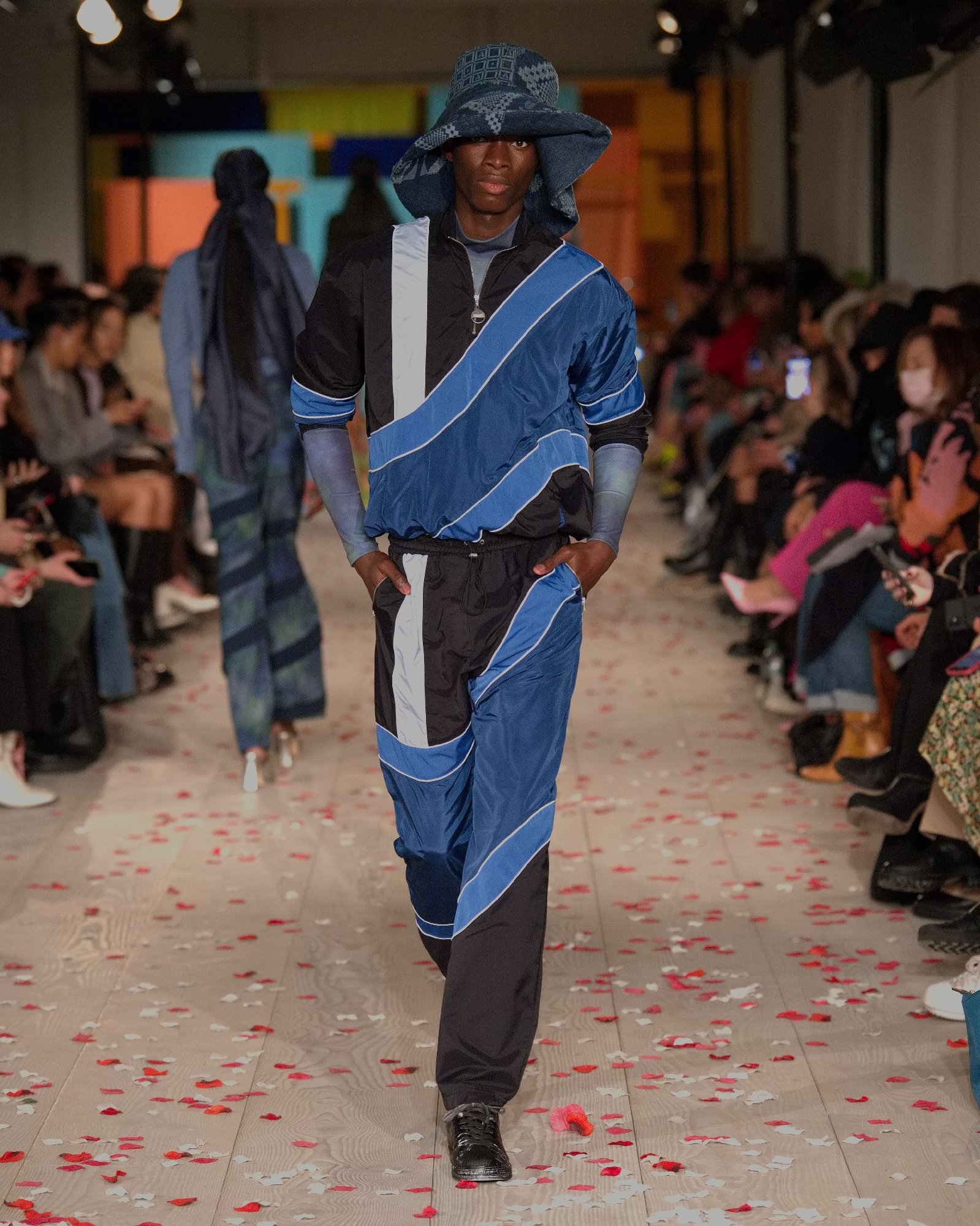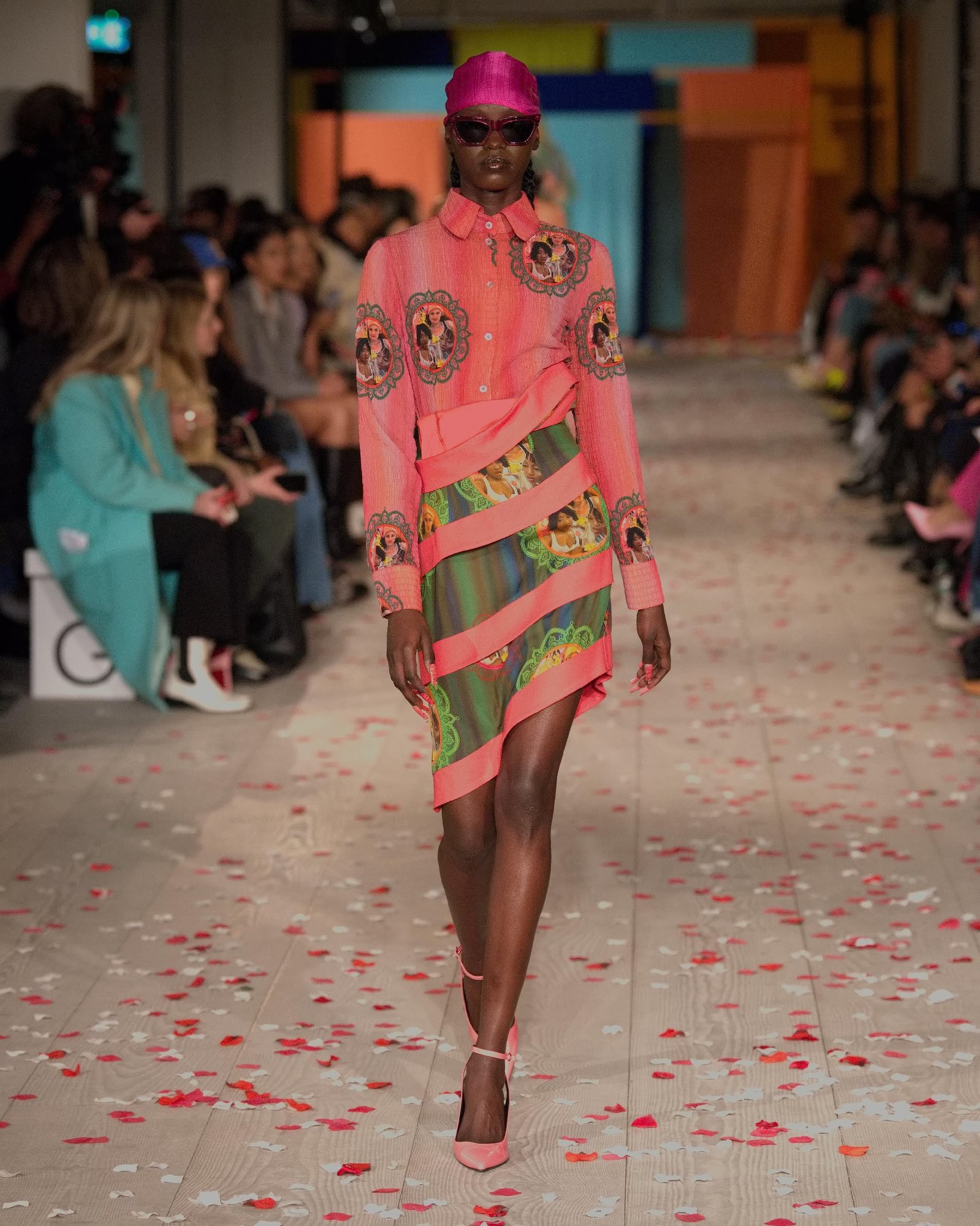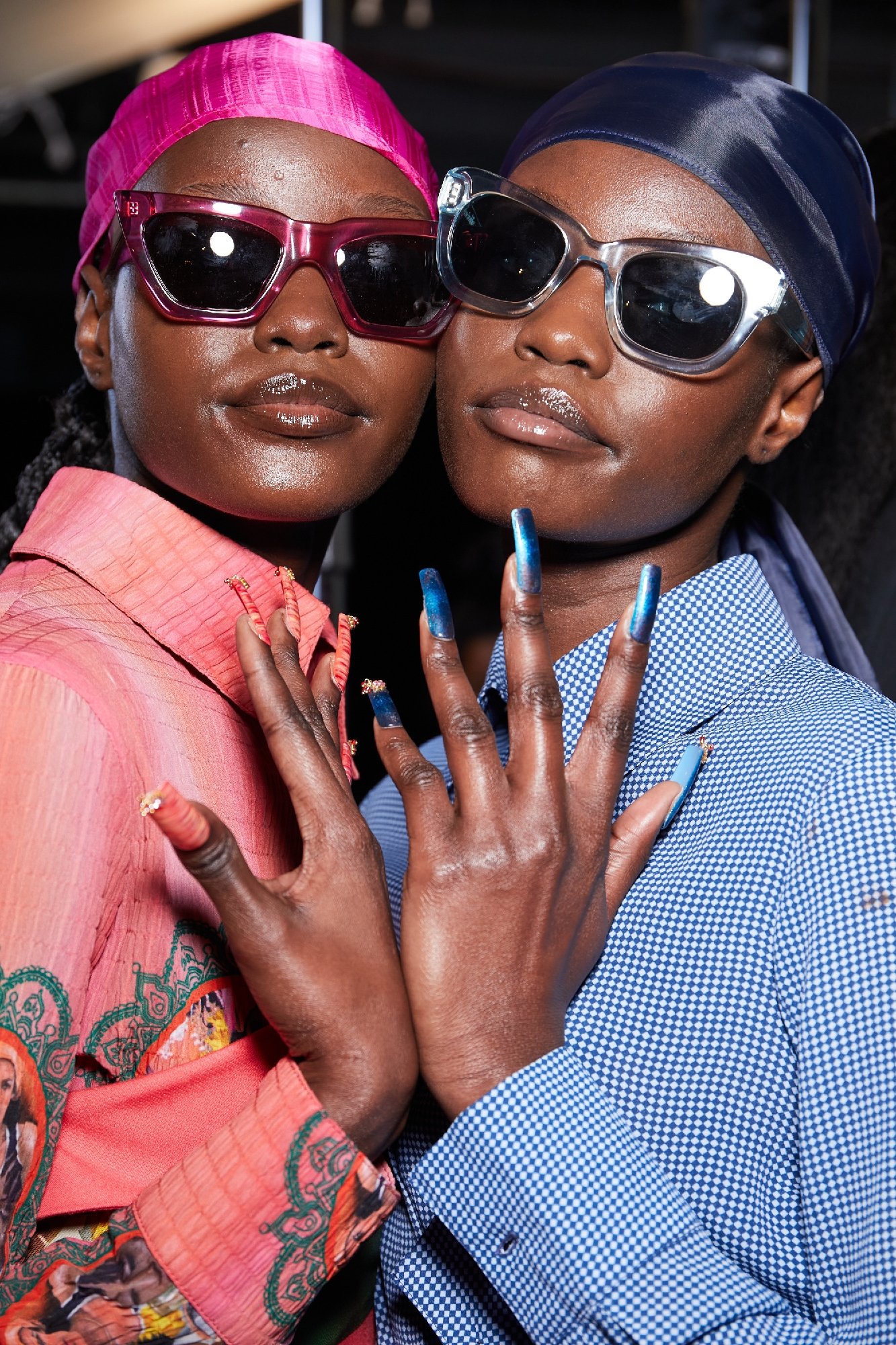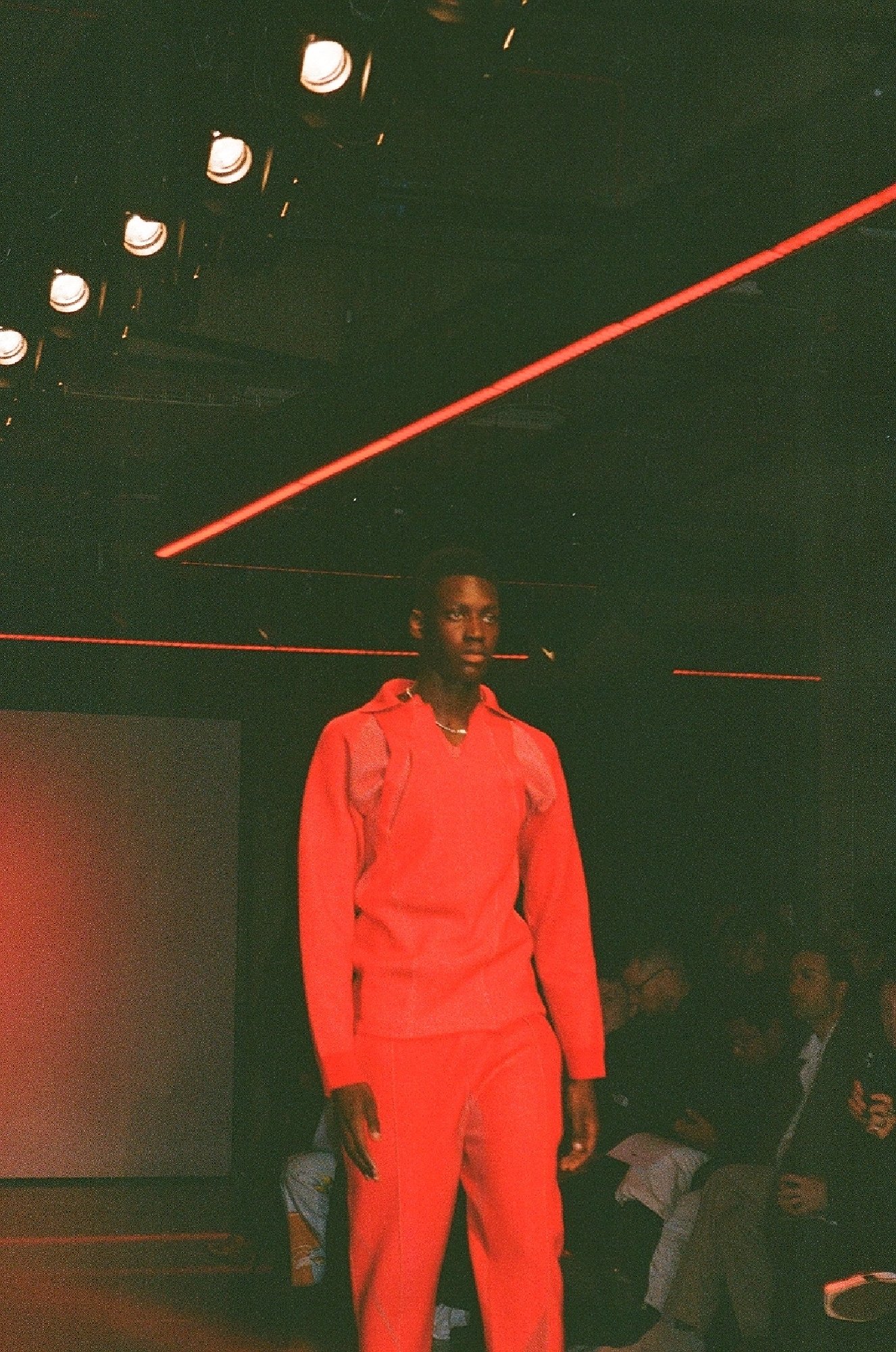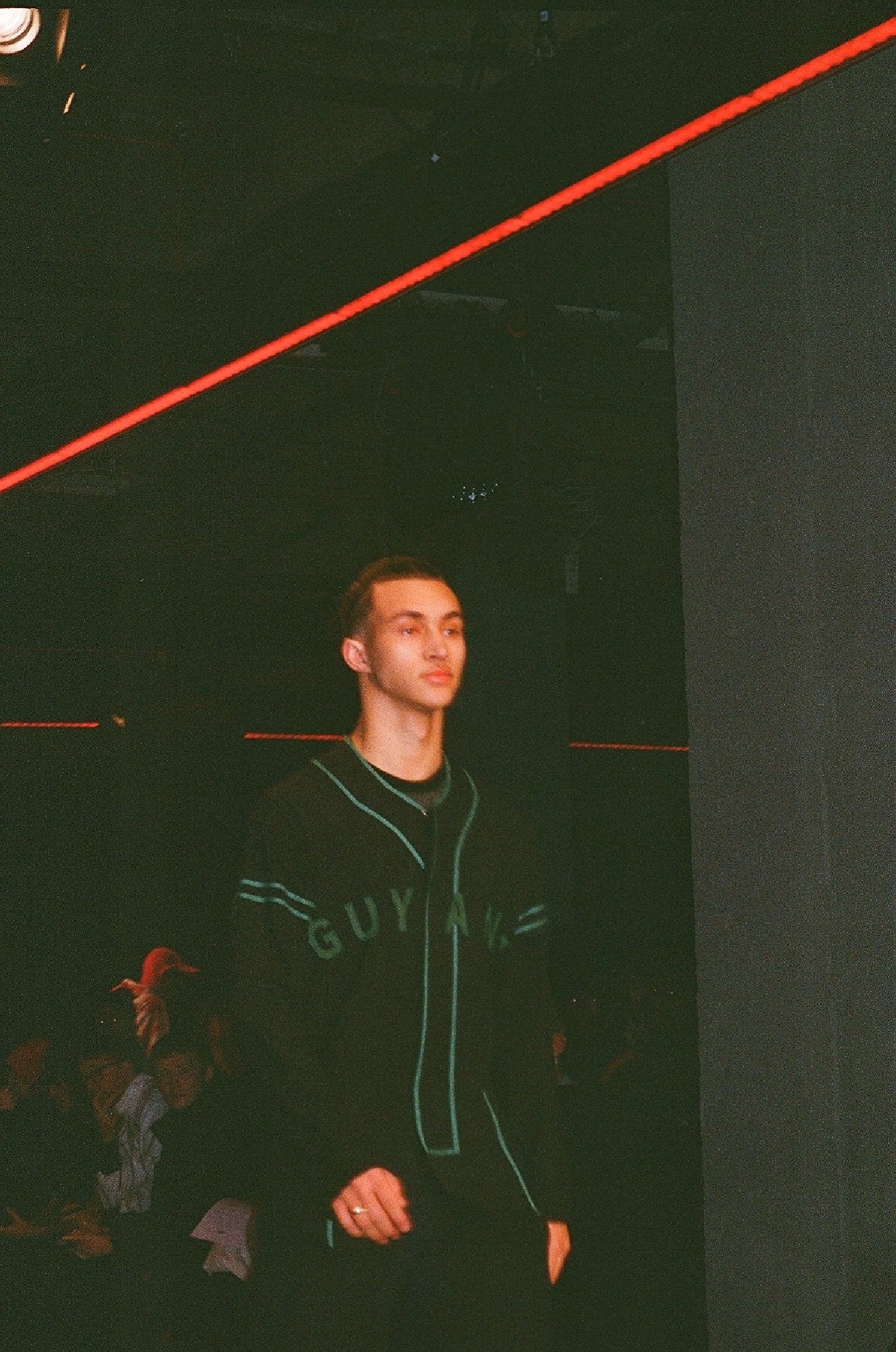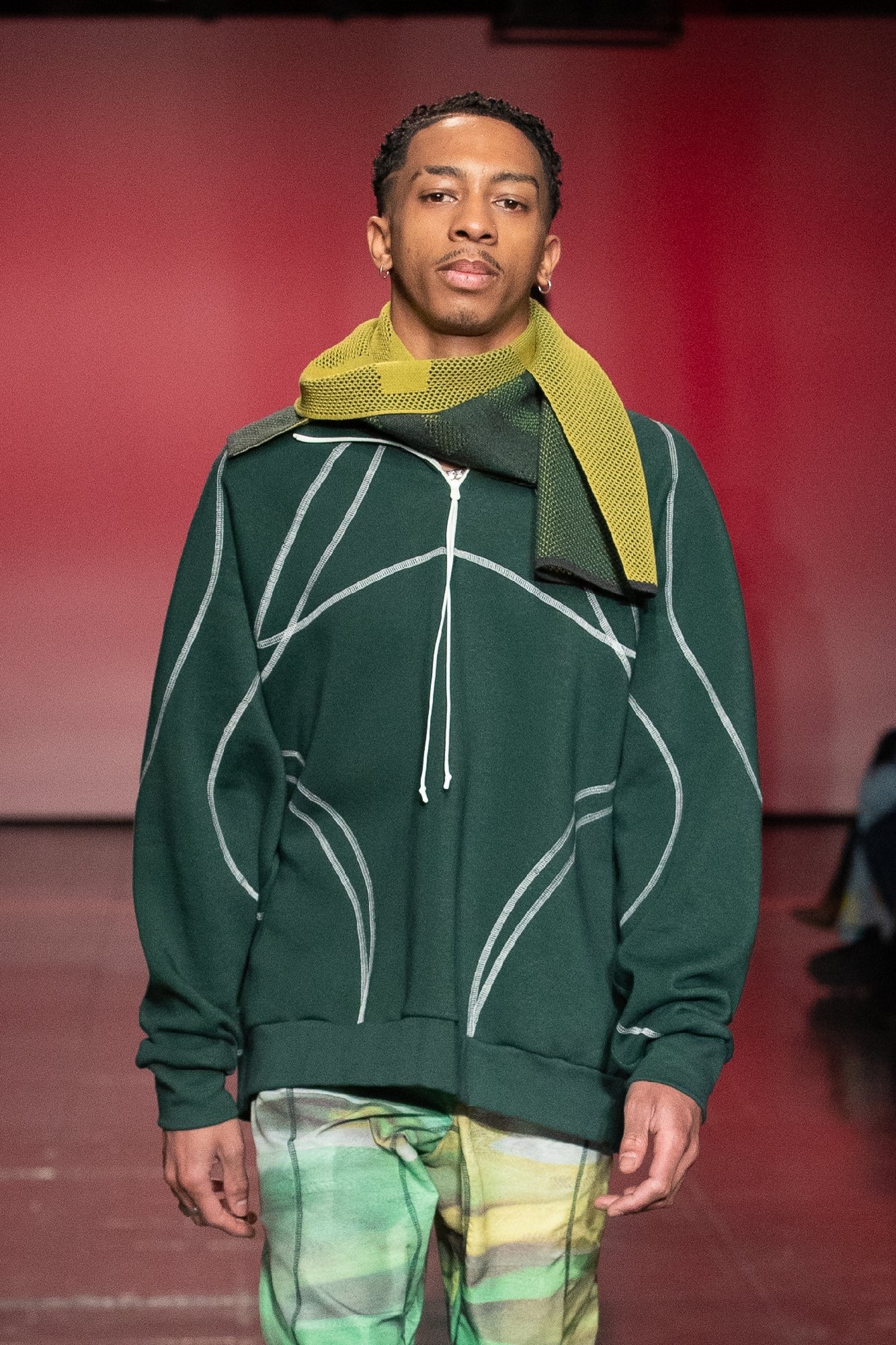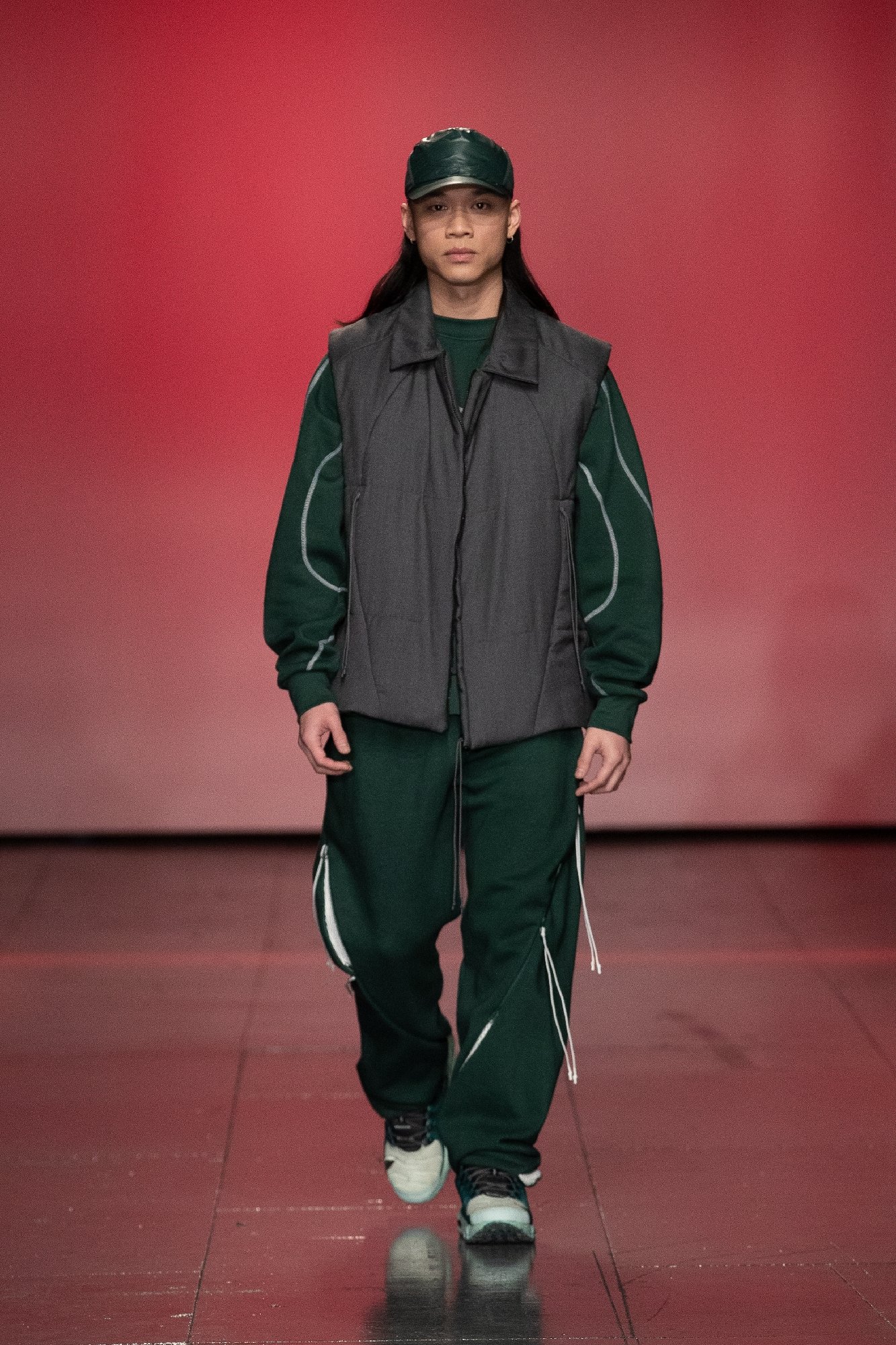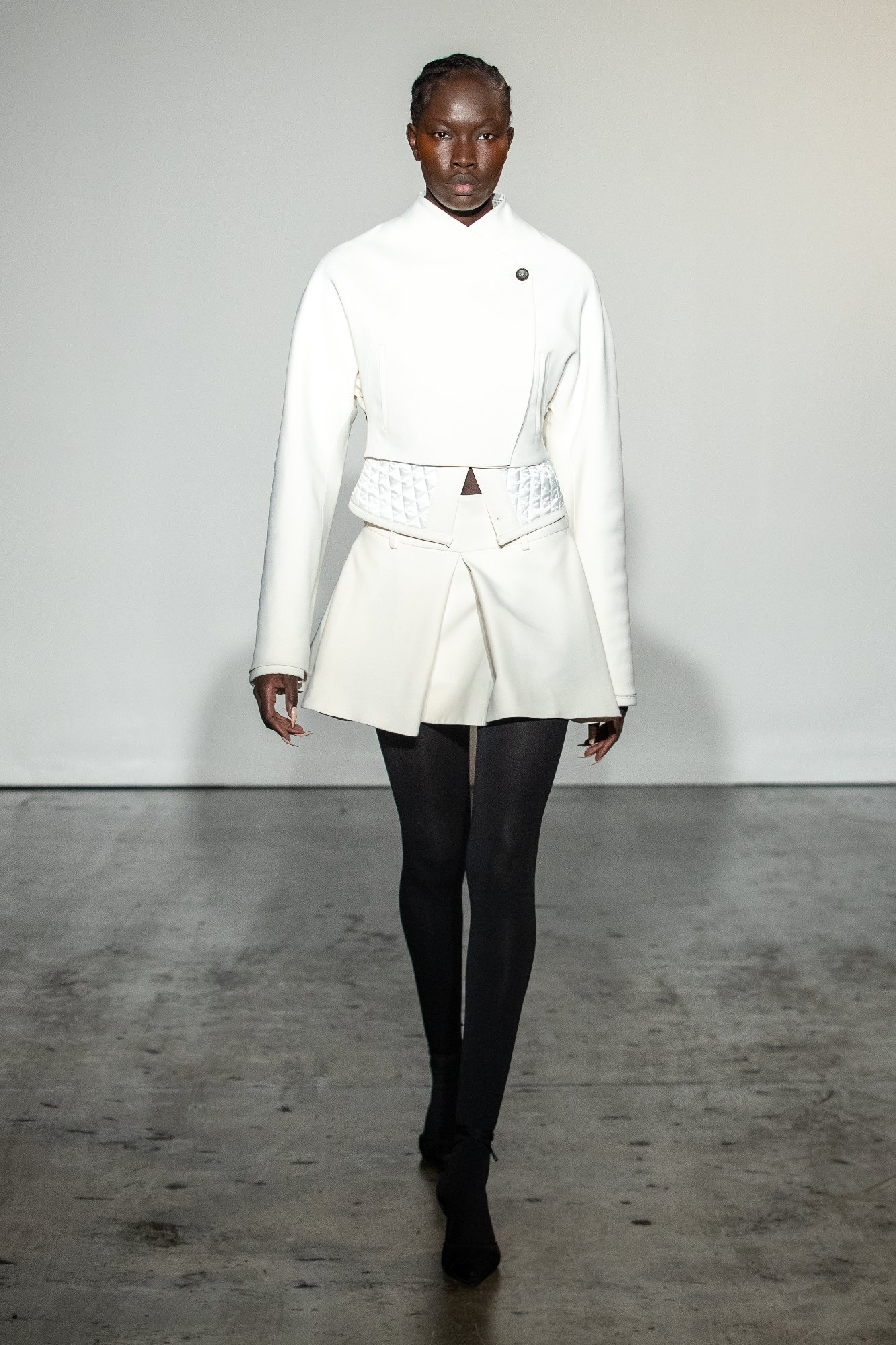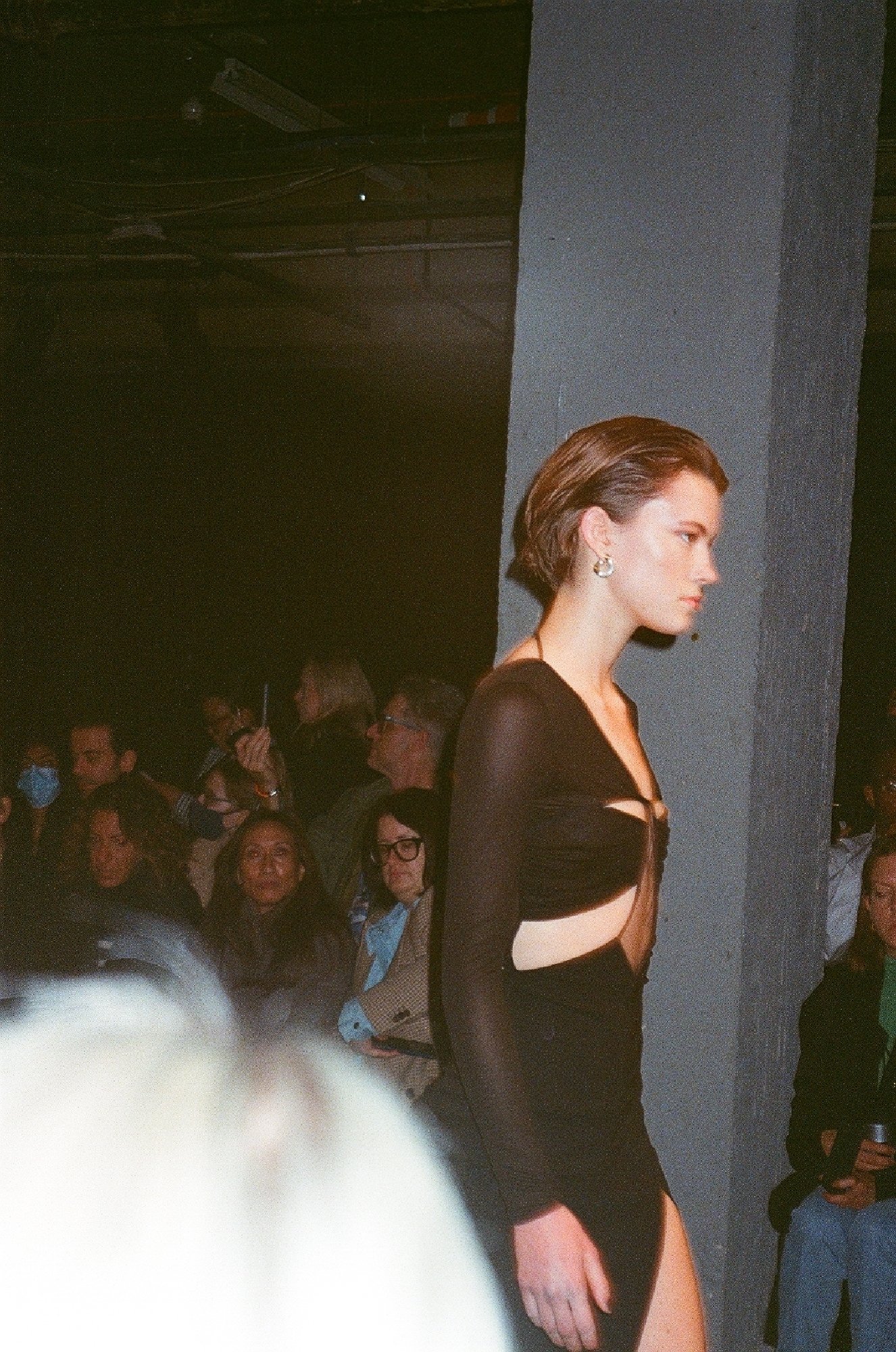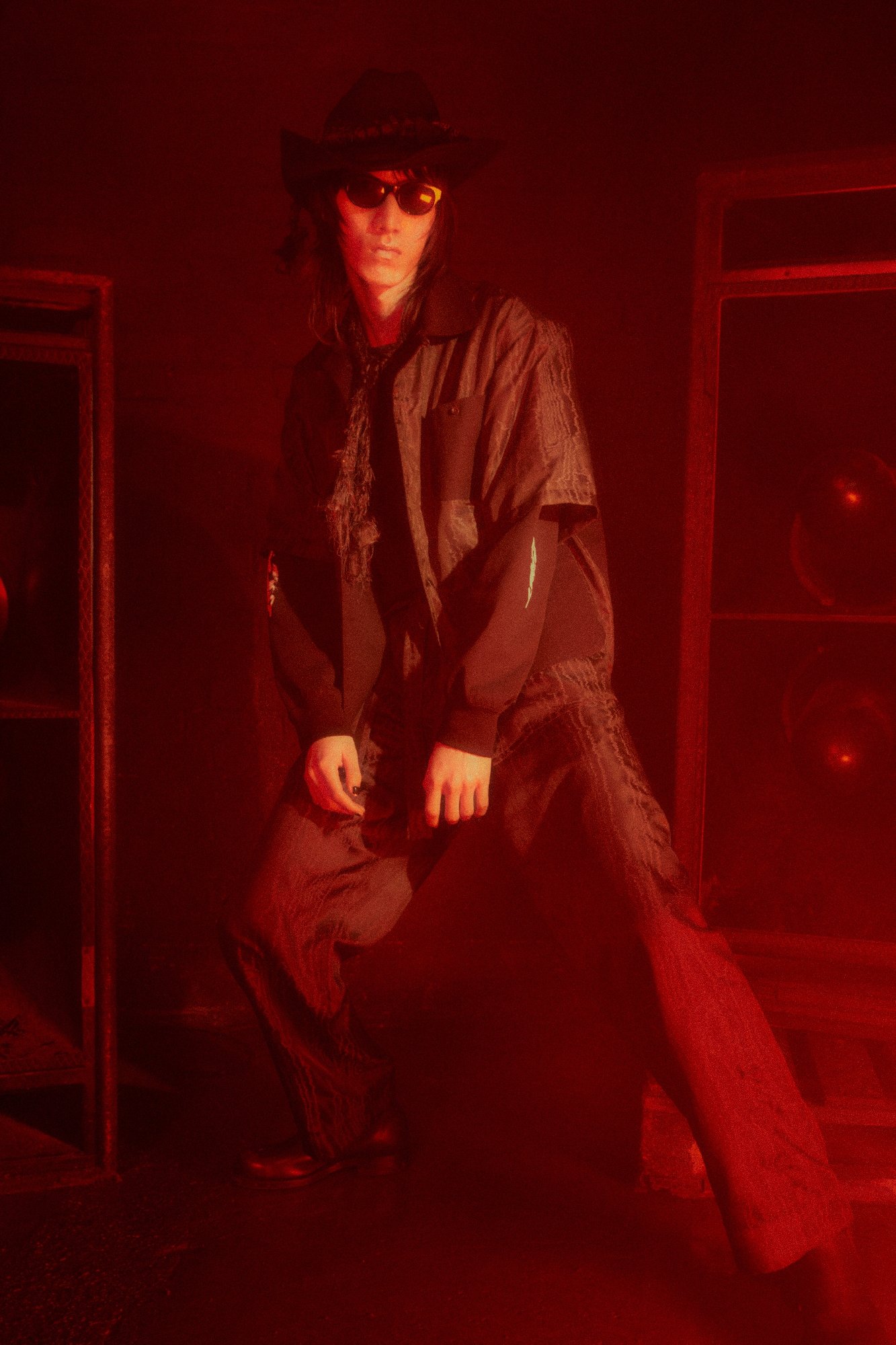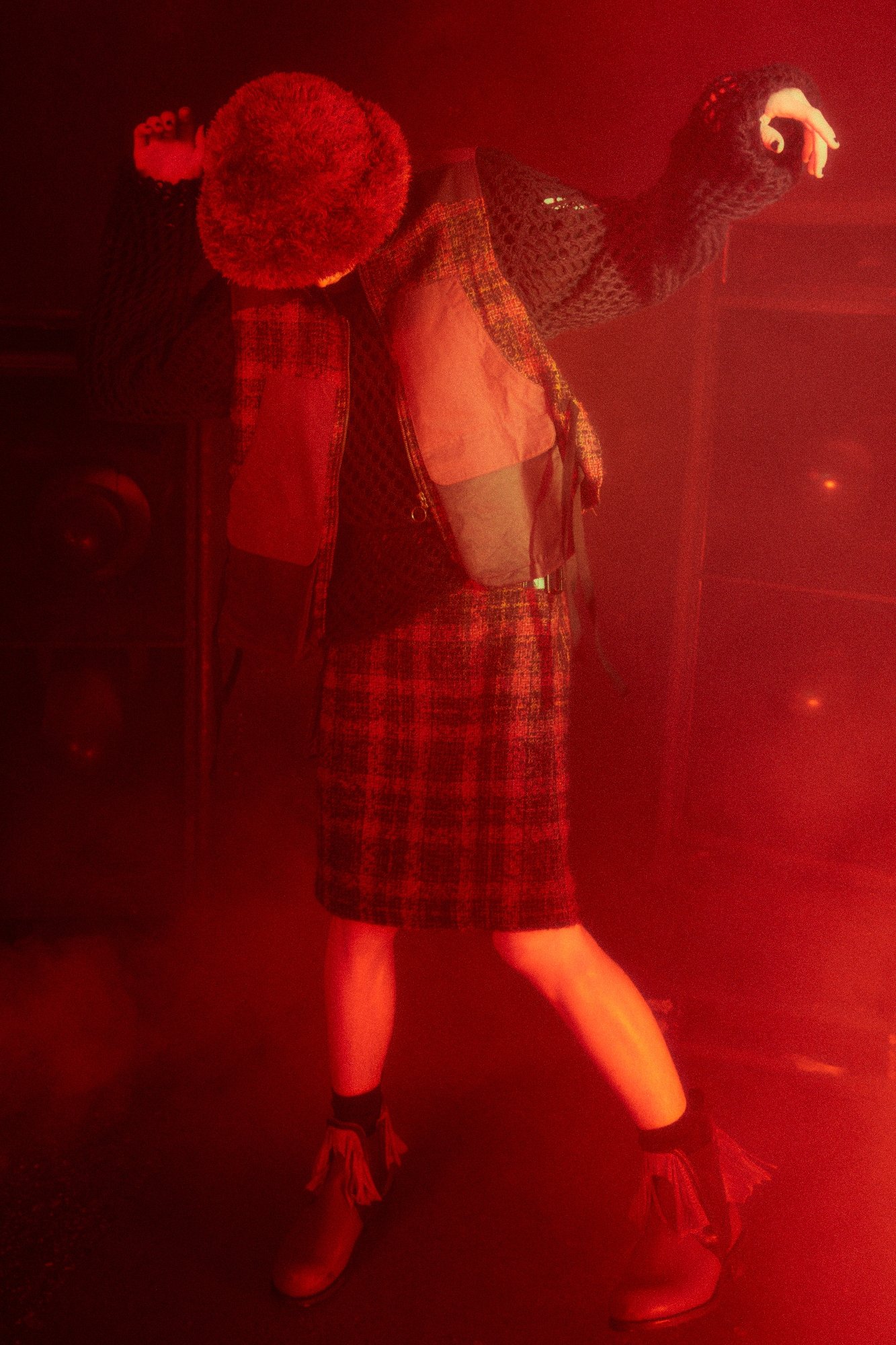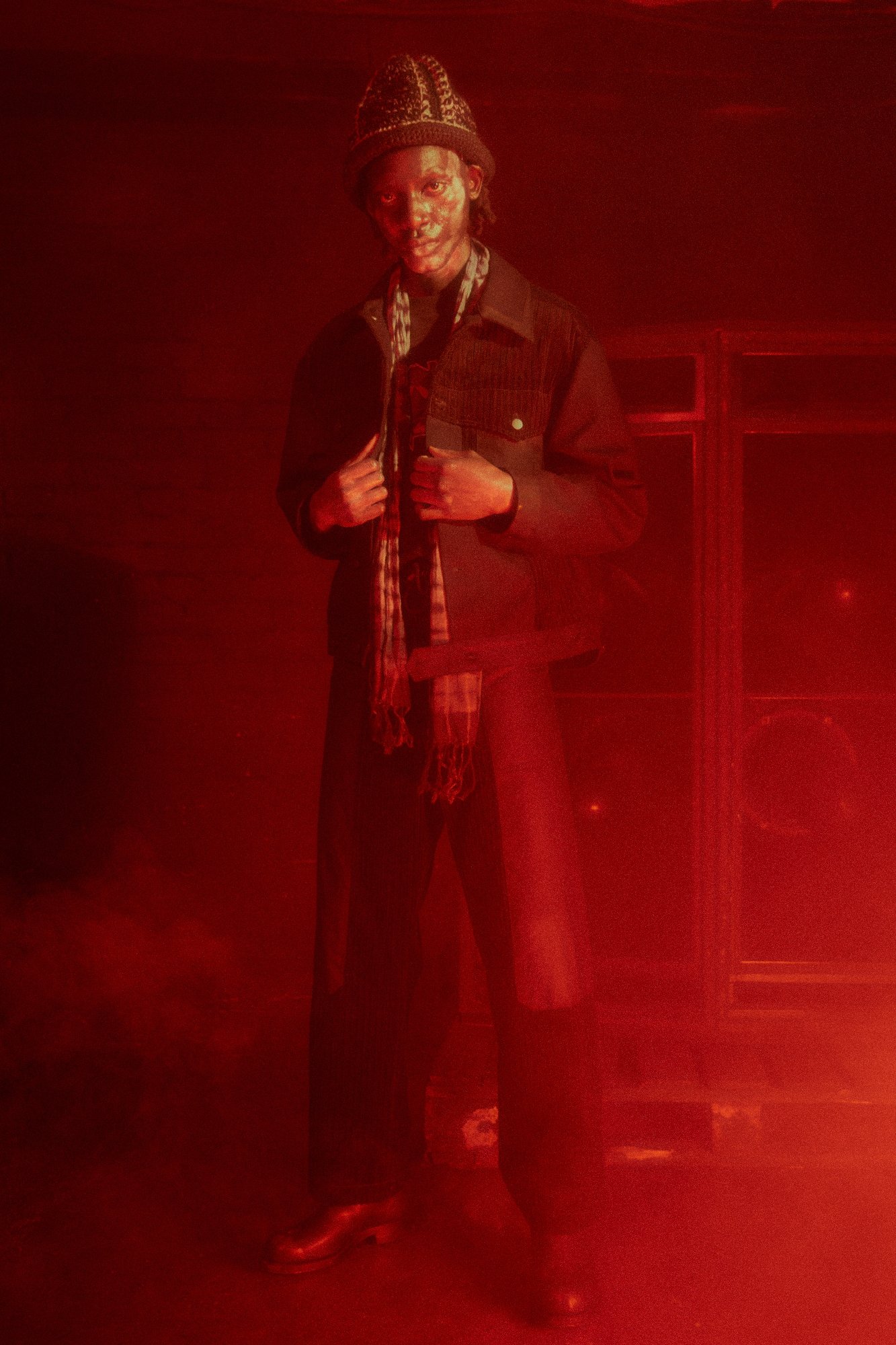The mood was jubilant at London Fashion Week as designers celebrated diversity and resilience
Rather serendipitously, the last day of London Fashion Week coincided with what the British press had dubbed ‘Freedom Day’ - the date the UK government was expected to announce the end to remaining coronavirus restrictions. That sense of optimism and excitement was felt in a number of the AW 22 collections. And there was no better embodiment of this positive spirit than the last major show of the week, Ozwald Boateng’s ‘Black AI’ extravaganza celebrating Black British excellence. Held at the Savoy Theatre, it was a joyous tribute to the African diaspora. It almost didn’t matter what the clothes looked like, not when heavyweights like Idris Elba, Goldie, Pa Salieu and Kojey Radical forming part of the over 100-strong cast of models.
But the clothes were naturally superb too. Boateng reminded us that he remains the master of tailoring, this season mixing up sharp suits with looser lounge looks and silky robes for men and women. His famous use of colour was expressed through a sophisticated pallet of burgundy, indigo, olive and ivory. All this was laced through with influences of his Ghanaian heritage such as statement kente coats and plethora of adinkra prints. It was an enormous display that did justice to its intent to salute all that is influential about Black culture.
Also tugging at the heartstrings was Labrum’s second on-schedule outing, this time themed ‘Poetics of Movement’ and exploring ideas around African/diaspora migration. As with last season, the music set the tone as a choir led by multidisciplinary artist Julianknxx performed a rendition of his work Black Corporeal (Breathe), lending a contemplative and deeply moving atmosphere to the show. The collection was anchored by a focus on powerful outerwear (often necessary for journeying). Suit jackets appeared either collarless with contrast-coloured patchwork, or in a new boxy shape with a print of a flower across the torso. The womenswear had a masculine slant with trouser separates worn over long cotton and wool coats. A collaboration with Nigerian luxury leather goods brand Nosakhari, who used Labrum dead stock to make patchwork bags, was a welcome finishing touch. A rapturous applause was let out when creative director Foday Dumbuya stepped out for his bow surrounded by dancing models.
Elsewhere, Priya Ahluwalia took direct inspiration from her own Nigerian/Indian heritage for her collection, ‘From Bollywood to Nollywood’. It was an unabashedly loud yet cogent exploration of these two colourful worlds that she fully immersed herself in during lockdown, now coming out strong with her first solo catwalk show. The clashing prints took their cue from the 1970s as browns and oranges mixed together with greens and pinks across sportily looks for men and women, many topped off with fantastically large and floppy hats. The film references were evident throughout and, in some instances, as obviously as a movie poster or actor’s face print on everything from silk shirts to a denim-on-denim jeans and jacket combo. A riotous moment and one we’d all been waiting for.
Saul Nash used AW22 to explore his Guyanese background and how it relates to his upbringing and current day living in London. The show was preceded by the screening of a film that focused on dance and movement, which are central themes in the designer/choreographer’s Nash’s work, shot in a storied neighbourhood barbershop in North London. The expected athletic aesthetic was elevated this season by the use of high-quality wools, a reflection of Nash being a finalist for the International Woolmark Prize 2022. A tailored black suit in tech fabric sought to combine functionality of movement with the traditional stiffness of that garment with refreshing effect. Elsewhere a SAUL insignia showed up on the back of activewear sweaters and tightly knotted scarves.
Maximilian Davies, the former junior designer at Grace Wales Bonner, showed a mature collection for his last outing as part of the Fashion East incubator programme alongside Jawara Alleyne and Chet Lo. An examination of his religious upbringing in rural England, it was a beautiful exercise in tailoring, giving nods to school uniforms, biker gangs and grunge along the way. The two opening looks featured woollen grey suits for men and women. Cuts were precise, be it in a hooded sweater and briefs cut close to the body, or a tank top simply worn with culottes and elbow-length leather gloves. It was at once an immaculately well-made collection and yet suggestively alluring.
The best of the young designer shows though, came from Nensi Dojaka and SS Daley. Dojaka continued her exploration of lingerie-inspired womenswear but this time mixed it up with some more covered-up knitwear. The wearability of the collection continued to various forms of the little black dress, some sheer and others with her trademark cut-outs, pin tucks and skinny straps. The designer struck an artful balance between the dainty reveal and a sensibility that reads more body positivity and less overt sexiness. Daley’s show on the other hand, was partly a live theatre performance that looked at the dissolution of a British stately home. The clothes included nonchalantly worn billowy cotton and silk shirts and houndstooth suits, all aesthetically genderless. This “queering” of the set, as the designer called it, was very convincing in its upending of the British class system.
Nicholas Daley has had a busy few months: at the same time that he took up a pop-up store in London’s Soho, he also managed to design and shoot his AW22 campaign and host a LFW party. The collection, called ‘Dark Haze’ is his ode to Black rock, punk and funk. Think George Clinton meets Sly and the Family Stone. Think red leather fringed shirts worn with tartan skirts and patchwork jackets. Shooting the collection at an industrial-warehouse complex in the far east end of London, it made sense to carry on the good vibrations at the same venue with a raucous gig featuring the multi-instrumentalist artist Wu-Lu.
This being the biggest LFW since the pandemic and the BLM movement jolted fashion to seriously consider issues around diversity and inclusion, the question of whether the industry had really changed remains on everyone’s minds. The panel discussion, Black In Fashion, organised by the L8Bloomers platform brought together Pause magazine’s Rhys Marcus Jay, Streetsouk’s Iretidayo Zaccheaus, model Brian Whitaker and stylist/costume designer Barbara Fu Safira to discuss representation in the industry. Topics covered in the lively and heartfelt discussion included tokenism, colourism, lack of appreciation of Black input and the importance of supporting Black-owned brands. When Barbara - a regular Nataal contributor – was asked what it is that distinguishes her as a Black creative, she summed it up for everyone: “The taste, the style, the soul, the earth… What we bring in fashion is our ancestors, something that is rooted and divine”.
In the end, despite the real concerns that still dog the industry, the overarching mood of the week remained one of jubilation for everyone being back IRL to highlight the city’s finest creativity. This truly was a time for celebration.


